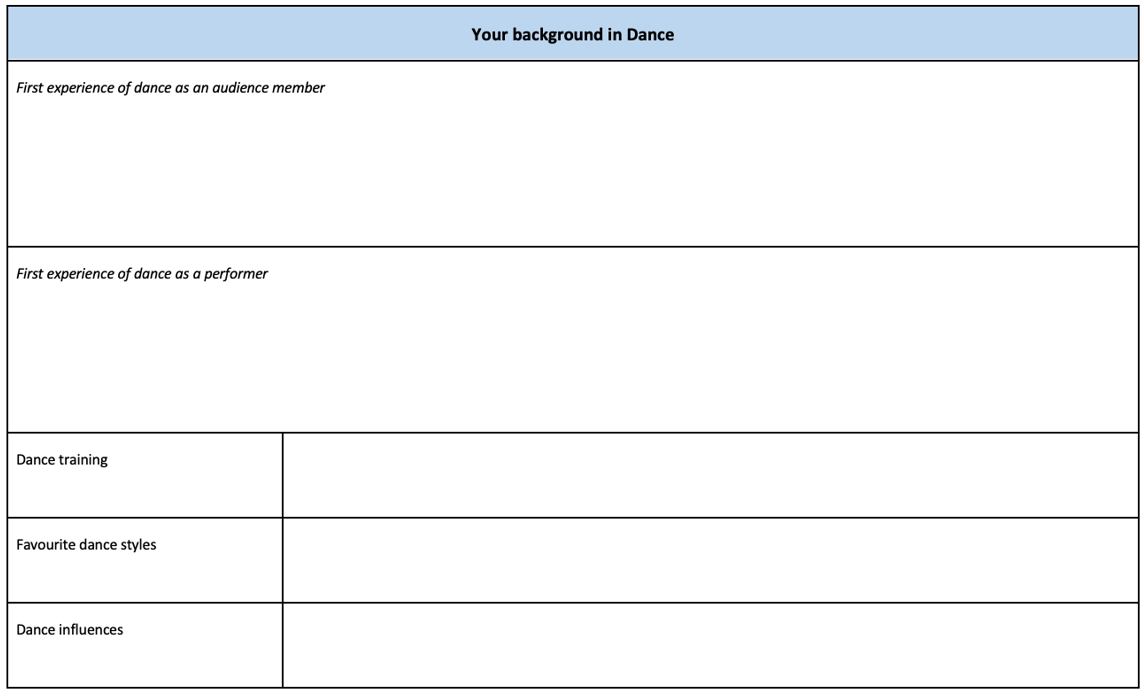Graphic organisers can also be used to support students to write explanations of their performances. The organiser below demonstrates how students can note down the personal influences for their choreographed piece, which may help construct a choreographic intention for the development of a student's dance work. Students can later use these notes to support future explanations of their performance, whether written or spoken.
This template asks students to think about the current influences in their lives. This process is used when realising a dance work and is imperative in the planning and research stage of the choreographic process. This strategy supports students to consider, develop and justify their choreographic intent and influences in oral and written form. It is intended to align with students' development of their own choreography.
- The teacher asks students (individually) to brainstorm the factors influencing their dance work and to note these in the table below (Taken from the Dance influence template):

- Using the completed table, each student (or group of students) develops a short oral presentation to go with their performance of their own choreography. The following guides students to structure the oral presentation:
Introduction
- Introduce yourself as a dancer, your background, and interests in Dance. The introduction may start with a brief anecdote about a memory of a performance of a key figure.
- Make a link between your background and the introduction to the current dance work.
Body
- Outline the name of the work, its intention, and the purpose in one or two sentences.
- Include two to four influences on the work and explain their significance/
- Provide examples of specific movements/dance elements in the work that convey the intention, theme and meaning of the piece.
Conclusion
- Provide one or two sentences that sum up the intention and significance of the work and how you hope it affects audiences.
- Prior to the students' delivering their presentations, the teacher provides scaffolding for active listening and constructive feedback, for example suggesting student audience members identify and note:
- One way in which the presenter linked their background and influences to the dance work
- One example of movement that the presenter discussed in relation to intention
- One question you would like to ask the presenter about their work.
- Students deliver their oral presentations. The teacher and student audience listen actively and make notes for feedback.
- Students could provide their feedback and the presenter responds to questions.
- The teacher conducts a short reflective discussion based around the following prompts:
- What did you learn about others' dance works, influences and intentions?
- How did you clarify or extend your own vision and intention for your dance work?
- Students are given the opportunity to write a brief Dance journal entry based on the above reflections.
Curriculum links for the above example: VCADAE034, VCADAD036, VCADAR038, VCADAE041, VCADAD043, VCADAR039, VCADAR045.